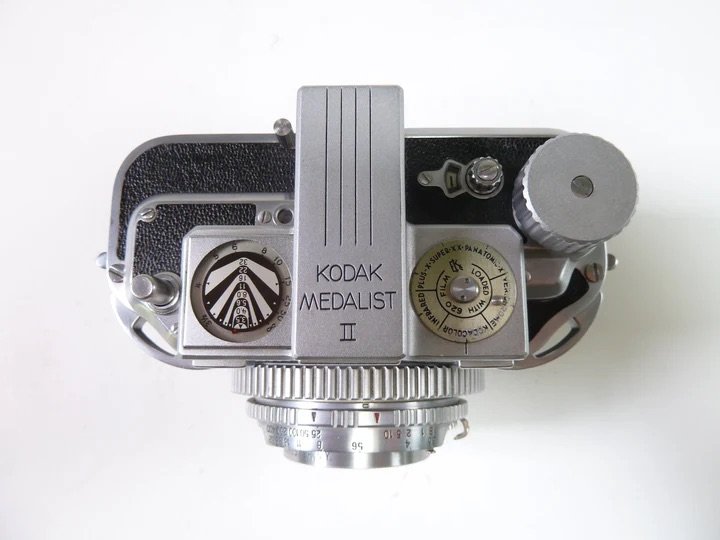Kodak Medalist I & II
(1941-1952) The Kodak Medalist is a medium-format rangefinder camera designed for 620 film, producing 6x9 exposures. It was introduced in 1941 by Kodak, with a post-WWII version, the Medalist II, adding flash sync but removing the self-timer and fine-focus knob. Designed by Walter Dorwin Teague and Joe Mihalyi, the camera was highly regarded for its ruggedness, sharpness, and simplicity, making it ideal for military use during WWII. The Medalist features a collapsible lens, top-mounted controls, and an advanced depth-of-field indicator. Its rangefinder is a split-image type with a high magnification, offering improved accuracy. The camera’s construction focuses on durability, with an easy-to-repair design. It contrasts with German and Japanese cameras of the era by emphasizing ruggedness over miniaturization and complexity.

